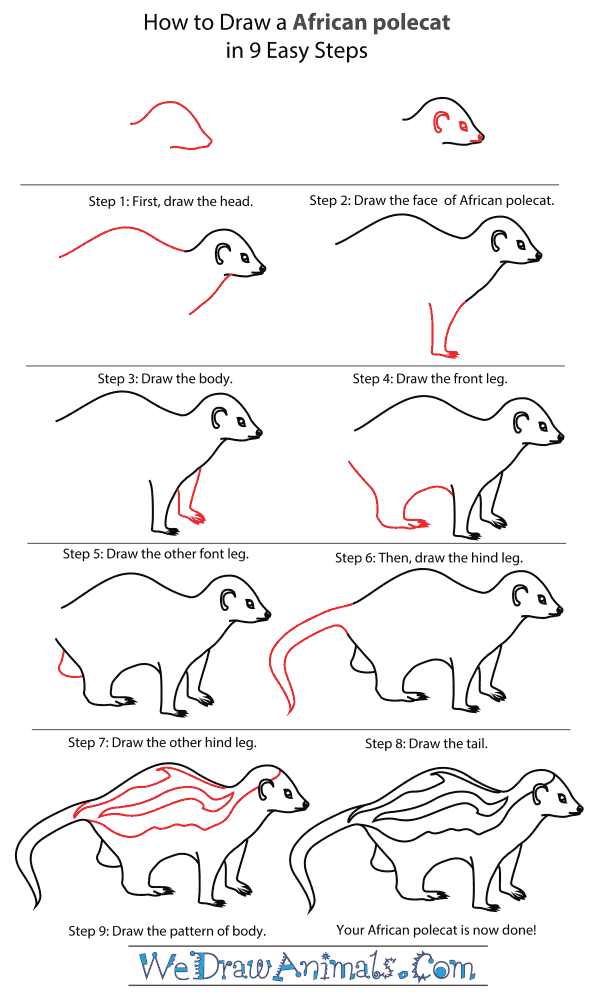In this quick tutorial you'll learn how to draw an African Polecat in 9 easy steps - great for kids and novice artists.
The images above represent how your finished drawing is going to look and the steps involved.
Below are the individual steps - you can click on each one for a High Resolution printable PDF version.
At the bottom you can read some interesting facts about the African Polecat.
Make sure you also check out any of the hundreds of drawing tutorials grouped by category.
How to Draw an African Polecat - Step-by-Step Tutorial
Step 1: Let's draw an African polecat! Trace the top of a semi-circle for the head, drawing the bottom only halfway.
Step 2: Trace a small dot at one end for the nose. Trace a short line across the bottom for the mouth. Draw an oval with a small circle in it for the eye. Then, draw a backwards letter C for the ear.
Step 3: Draw a long hump across the back and a short curved line along the front for the body.
Step 4: Draw the first leg by tracing two simple lines that start out a bit wide but get closer together toward the end. Trace short lines at the front for the paw.
Step 5: Add the second front leg, drawing it much like you did the first one!
Step 6: Trace the first hind leg, making the top of this leg much wider than the front ones, and the foot much longer.
Step 7: Add the last hind leg by tracing a simple L along the other hind leg.
Step 8: Add a long, skinny tail, making sure to curl the end toward the ground.
Step 9: Last, trace a line from the top of the head along the entire body. Add another long line across the back to finish the pattern. There's your African polecat!
Interesting Facts about the African Polecat
The African Polecat is also referred to as the African skunk. This is because not only does it look like a skunk, but it also marks its territory by letting out a stinky substance, just like a skunk does. The African Polecat lives in mostly dry climates, like those in Africa and the Congo.
Did you know?
- The African Polecat is a carnivore, which means that it eats meat. A typical diet for the polecat includes rodents, snakes, birds, insects, and amphibians.
- Because the African Polecat has a small stomach, it has to eat more frequently. Their claws help them dig into the dirt to be able to find more food.
- The African Polecat usually travels alone. It is a nocturnal creature, which means that it usually sleeps during the day and hunts at night.
African Polecats will growl to warn their predators that they mean business. They have also been heard to let out high-pitched screams when they are in distress. It is at these moments when they will also attach their enemies with their stinky spray. Younger African Polecats have their own brand of noise that they make. They can sound either happy or sad, depending on whether or not their moms are nearby.










